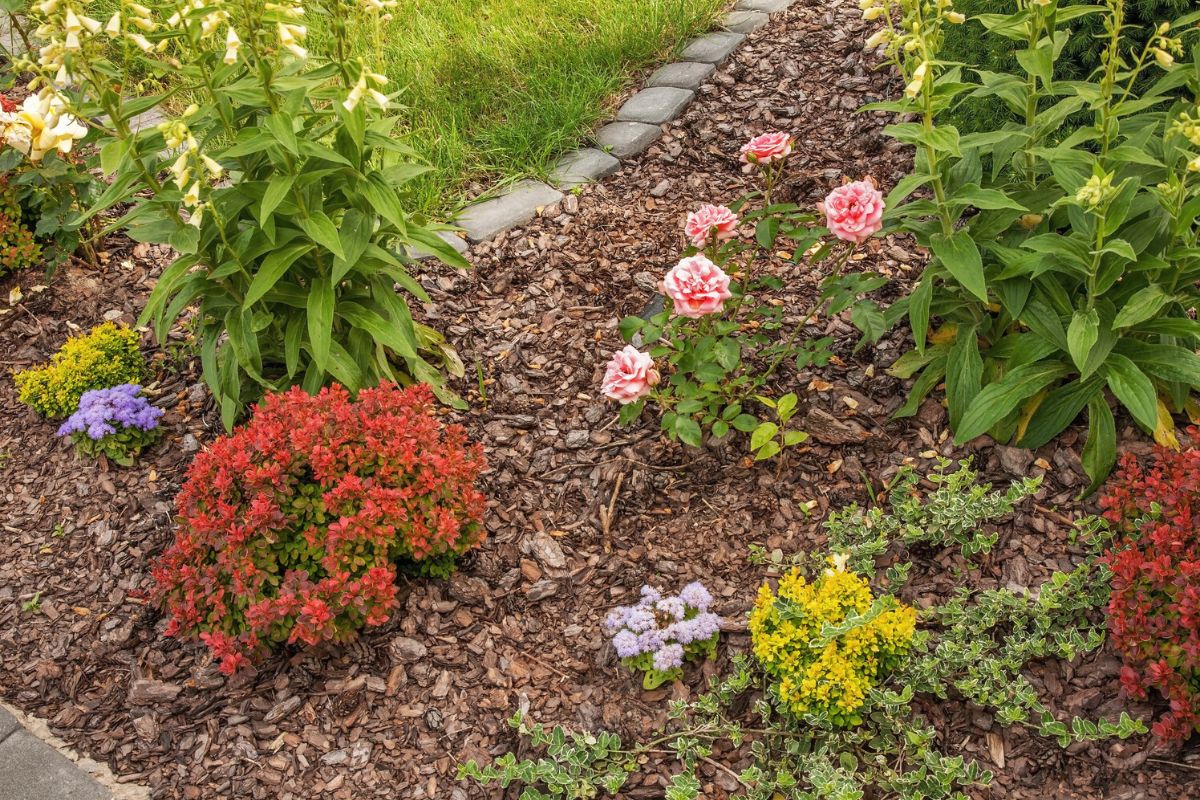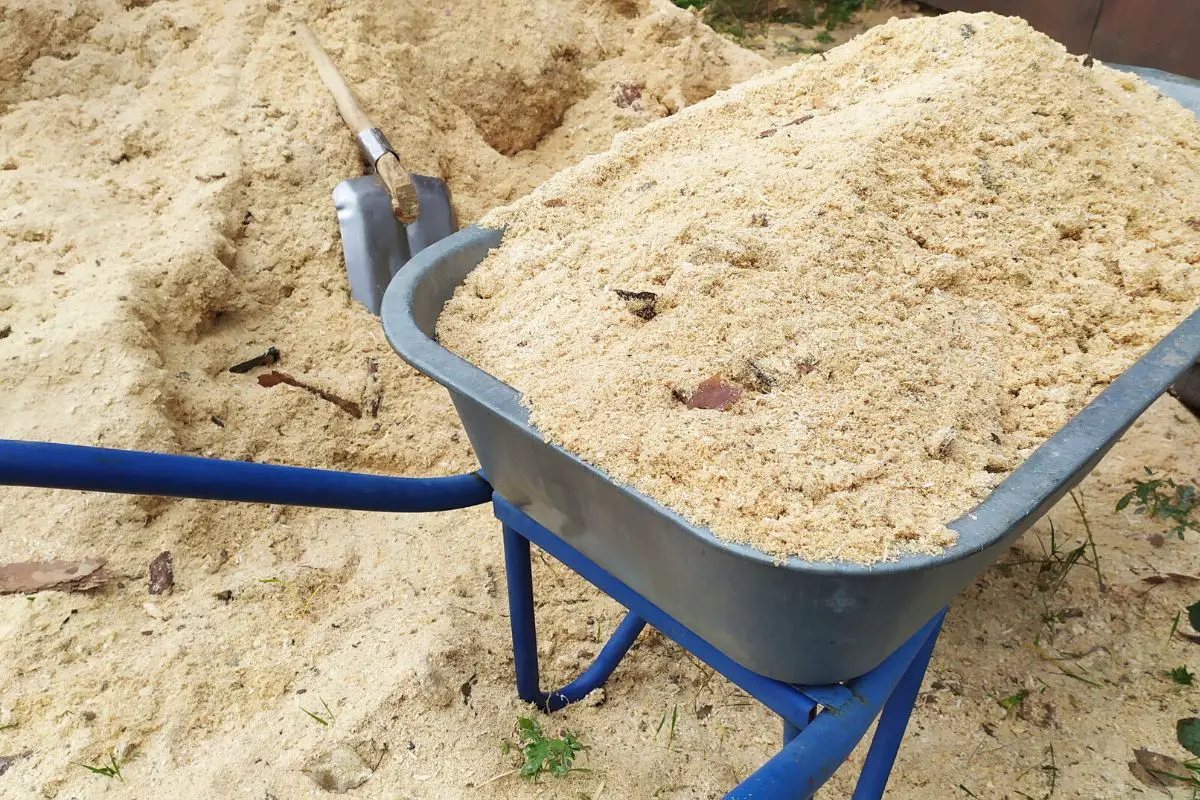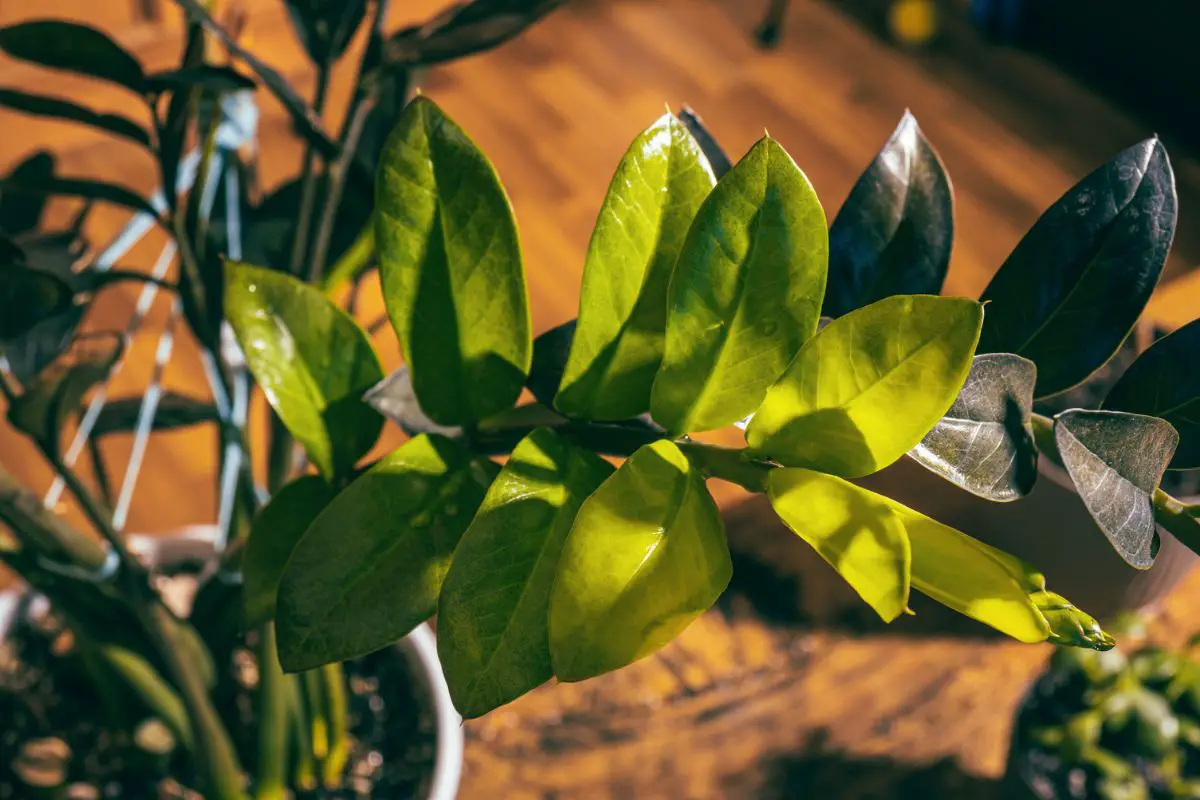Gardening or woodworking activities like pruning or collecting firewood from trees near your lawn can generate large amounts of sawdust. Unfortunately, sawdust can smother and kill turfgrass, making it crucial to keep it off your lawn. If you somehow ended up with a pile of sawdust, don’t worry, because there are plenty of easy ways to remove it.
You can remove sawdust from your grass using a rake or a leaf blower to gather debris into one area. You can then sweep the sawdust onto a plastic tarp. Alternatively, you can use a garden-safe vacuum. The important thing is to remove the clumps or piles that would otherwise suffocate your grass.
If you’re curious why it’s important to remove sawdust from lawns, I’ll explain the effects of this material on grass. I’ll also share different removal techniques, what to do with leftover sawdust, and how to prevent the issue in the future. Read on to learn more!
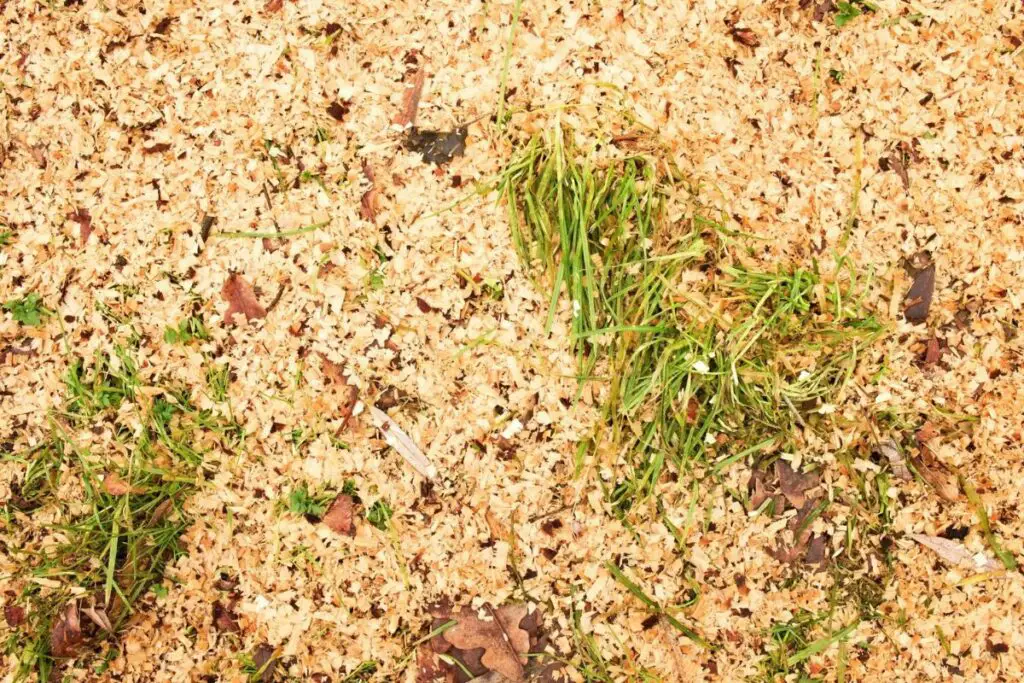
The Impact of Sawdust on Grass
I had some tall old trees on my lawn that needed to go because they gave me anxiety every time strong winds hit. Without thinking too much about it, I had some friends over to help cut down the trees. However, we ended up with piles of sawdust all over the grass.
I cleared the sawdust as best as I could, but there were some dense clumps left behind that I didn’t pay much attention to. After a few weeks, I noticed that the grass blades in the areas with more sawdust started to turn pale, with some even turning yellow.
Based on this observation and some research, I confirmed some downsides of using sawdust on grass:
Nitrogen Tie Up
Although sawdust is widely perceived as a great mulch material for vegetable gardens, it’s also a fact that it can steal nitrogen from the soil as it decomposes.
Fresh sawdust is carbon-rich and can hold much moisture. When paired with the nitrogen-rich fertilizer commonly applied on lawn grasses and the abundance of moisture, this can spell disaster.
The soil microbes will become hyperactive and reproduce quickly because of the abundance of resources. This microbial activity can generate heat. Depending on the density of sawdust clumps, it can dehydrate or burn the foliage of adjacent grass.
Moreover, it can deprive your grass of the nitrogen it needs for healthy root growth and vibrant green blades. This is one of the most plausible reasons for the yellowing of the affected grass.
Excess Moisture Retention
Sawdust can hold moisture very well due to its texture. This is one of the reasons it works well as an organic mulch. Because of this, under normal circumstances, I keep a 1-inch (2.5 cm) distance between the mulch and my plant’s crown or stem to prevent rot.
However, with grasses, it’s just not feasible. Young lawns typically need daily watering—sometimes even twice a day. The sawdust layer will lock in this moisture and keep the surface wet.
Too much moisture on the soil surface will keep the roots shallow, making your grass more susceptible to root rot and vulnerable to weeds.
Crusting on the Soil Surface
Because of its excellent moisture retention, sawdust can form clumps or crust over the soil surface. Over time, this crust will become impenetrable to air or water.
It can then suffocate or choke the grass and eventually kill it.
The Bottom Line: Timely Removal Is Crucial
Removing the sawdust right away will help prevent the most damaging effects on your grass. However, even if you try to clean it up completely, it’s inevitable that a small portion of sawdust will stay on the lawn.
Whatever method of removal you choose from the list below, the key is not to leave thick layers, clumps, or piles that will damage your lawn.
Preparing for Sawdust Removal
There are various reasons sawdust can end up on your grass, including accidental spills or woodworking. Although it’s important to remove the sawdust promptly, you’ll first have to make a few preparations.
Gather the Tools
You can use different tools to remove sawdust, depending on the amount of debris or the size of your lawn.
Here are some common tools I’ve tried and proven effective in collecting sawdust:
- Bow rake: I recommend rakes that have smaller gaps between tines (less than 1 inch or 2.5 cm) because of the fine texture of sawdust.
- Leaf blower: You typically don’t need a strong-powered leaf blower for this purpose because sawdust is lightweight. If you have a handheld, battery-powered leaf blower with 200 CFM, it should suffice.
- Push mower with bag attachment: This device is useful in removing grass clippings if you don’t want to mulch your lawn with them. It can also suck in sawdust in the process.
- Outdoor wet and dry (WD) vacuum: This is optional, but if you have such a vacuum cleaner, you can remove sawdust from your grass more thoroughly.
- Plastic tarp or garbage bag: You can rake or blow the sawdust toward a plastic tarp. Alternatively, you can scoop up the pile and place it inside a plastic bag.
- Safety or protective gear: Face masks, eye goggles, and gloves will protect you from flying debris that can cause breathing problems, eye irritation, or splinters.
- Garden Hose: Using a fine spray setting helps to moisten the sawdust a bit as preparation for the actual removal.
Moisten the Affected Area With a Garden Hose or Sprinkler
Moist sawdust will be easier to work with or remove. If the sawdust is bone-dry, the particles will disperse and cause more mess as soon as you use your leaf blower. The rake will also struggle to gather dry sawdust where you want it.
However, don’t wait for the rain to moisten the sawdust. Heavy rain will press down the sawdust and make it difficult to remove as much of the debris as you can.
To properly moisten the sawdust, use the fine setting of your garden hose or sprinkler. Spray it evenly over the sawdust-filled area a day before the actual removal.
Avoid overwatering the area because wet sawdust can be heavier to blow or harder to rake. If the sawdust feels soggy, give it one more day of sunlight until it has the texture or weight of coarse sand before moving on to the removal methods.
Manual Removal Methods
The easiest way to get rid of sawdust from your lawn is to remove it manually before it sticks to the bottom of the grass.
Choose from the options and tips listed below for efficient removal and to keep your grass as sawdust-free as possible:
Rake the Sawdust Into a Pile
It’s best to use a bow rake with short tines and narrow gaps for faster sawdust collection. The flat head where the tines protrude from will provide additional support in collecting the sawdust without damaging your grass blades.
Pro tip: Avoid using a regular fan-shaped leaf rake because it will take forever to gather sawdust.
Another important reminder is to use a rake with a long handle (about 5 feet or 1.5 m long). Even if you use the right rake, this method will still require physical effort, and the longer handle will reduce the risk of a severe backache later.
Use simple repetitive strokes:
- Lightly press the tines through the sawdust layer.
- Pull the rake toward you, avoiding excess force that will till the soil. You wouldn’t want to disturb the soil surface and push the sawdust into it.
- Lift the rake and place it over another spot.
Repeating these simple steps patiently will make the process more efficient. Just bring the sawdust to a common point for easier collection.
If you have a large lawn, you can make multiple piles so the sawdust doesn’t have to travel long distances and break apart or spread along the way.
Use a Leaf Blower
A leaf blower is an excellent alternative to a bow rake if you have one.
Leaf blowers are typically categorized based on CFM or cubic feet per minute. It measures the amount of air the device blows out per minute.
In my experience, handheld, battery-powered leaf blowers with 200-400 CFM are very easy to use and can speed up sawdust or leaf removal 2-4 times faster than using a rake. To make it even more effective, you can use a narrow nozzle attachment.
Just make sure that the sawdust is a bit moist so that it will move over the lawn surface instead of flying around.
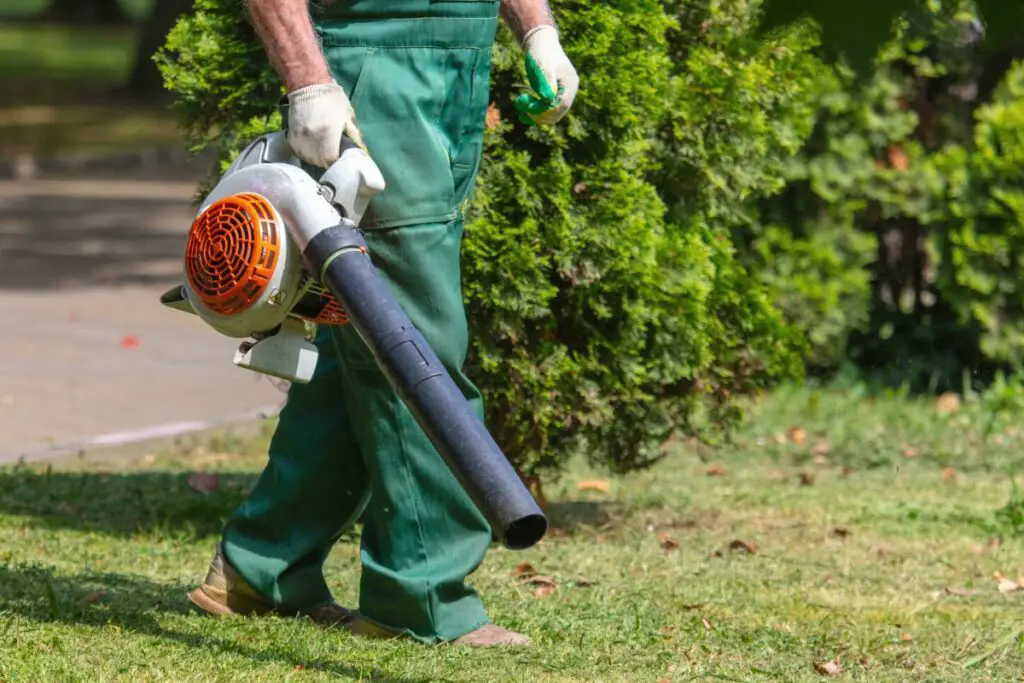
Use a Push Mower
If it’s about time to mow your lawn, you can use this opportunity to remove the unwanted sawdust using a push mower with a bag attachment.
The only difference when using this method is that the grass and sawdust must be dry for better suction. It will also prevent clogging the mower because wet grass clippings can get stuck and damage the push mower.
Use the push mower as you normally would and run it over the sawdust-filled area. Note that although this method will help remove much of the sawdust, some debris may still remain and will warrant another removal method.
Be sure to wear a face mask and goggles to protect yourself from any flying debris or dust. In addition, wear shoes and long pants to protect your feet from splinters.
Optional: Use an Outdoor Wet and Dry Vacuum Cleaner
The wet/dry vac method is an optional because this device can be costly. However, if you have one, you’ll be surprised at how effective it is at clearing out unwanted sawdust—and other loose debris—on your lawn.
They work like other vacuum cleaners, but a major advantage of outdoor WD vacuum cleaners—as the name implies—is that you don’t have to wait until the sawdust is wet or dry enough before clearing them.
They also come with various nozzle adjustments, making it more convenient to capture various-sized sawdust debris, sticks, and twigs.
WD vacuum cleaners are usually corded, so you’ll need to keep your kids or pets off the lawn while you’re working. More importantly, secure the electric connection before operating the device.
What to Do With Collected Sawdust
Push mowers and WD vacuum cleaners come with bags or tanks, making it easy to collect sawdust. However, when raking or using a leaf blower, you have the additional task of placing the collected sawdust onto a tarp or garbage bag for easier disposal or repurposing.
If you recently used herbicides or pesticides on your lawn, it’s best to dispose of the sawdust-waste mix.
However, if your lawn is free of chemicals, you can use the sawdust in various ways:
Add It to Your Compost Pile
Raking or blowing sawdust will inevitably bring some lawn waste along with it. You can add the collected sawdust and yard waste to your compost pile.
You can do the same for sawdust gathered in the mower or vacuum bags because they likely contain other lawn waste.
The good thing about using a push mower to collect sawdust is that it comes with fresh grass clippings, which can increase your pile’s nitrogen source. These clippings can add green matter, while the sawdust will add brown matter to your compost.
Just ensure that your compost pile has other carbon-rich yard waste like dried leaves and chopped-up wood debris. A healthy compost pile must have 30 units of carbon for every unit of nitrogen (30:1 C/N ratio).
Dry It Out for Later Use as Mulch
On the other hand, if you’re able to sort out the denser materials like twigs, branches, leaves, and grass, you can leave the sawdust on a plastic tarp to dry.
Choose an area that’s dry and has good air circulation while being protected from strong winds. Adequately drying and aerating the sawdust for about a week will make it safe for use as mulch in vegetable or flower gardens.
Keep the pile away from sources of fire because dry sawdust is highly flammable.
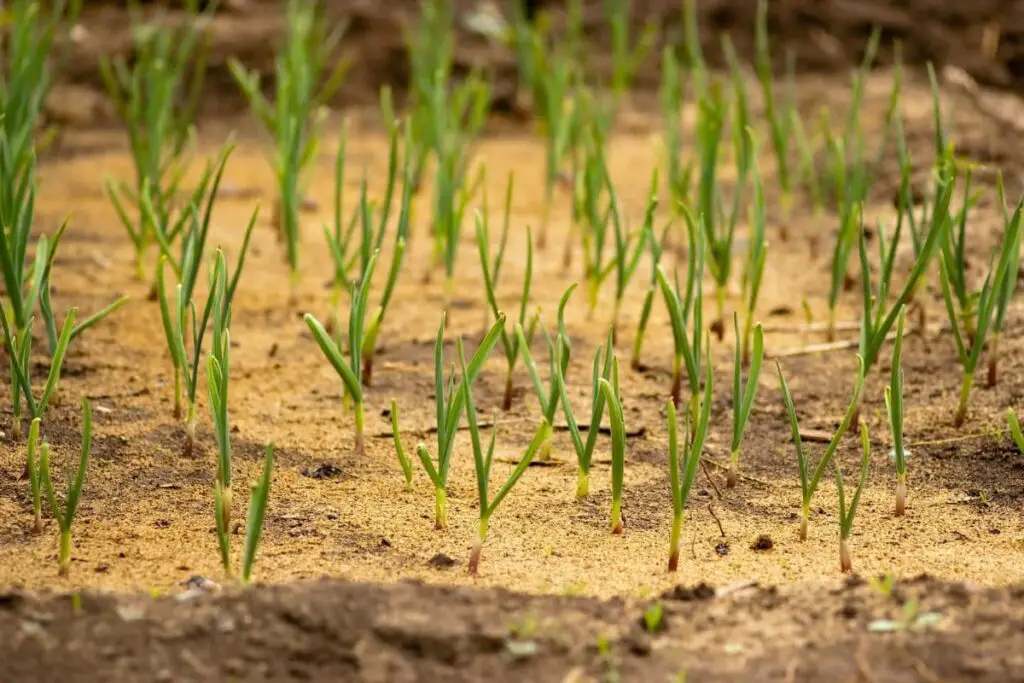
Follow-up Lawn Care
As discussed, it’s impossible to remove the sawdust from the grass completely.
That said, a small amount of sawdust on the lawn won’t cause much damage as long as you keep the following care tips in mind:
Remaining Sawdust Will Go to Mulch
When removing sawdust from grass, it’s important to get any clumps or thick layers. Any remaining sawdust that’s less than half an inch (1.3 cm) high is safe to stay on the lawn. Shorter and cool-season grasses will tolerate even less sawdust (only up to ¼ inch or 0.6 cm thick).
Rake the remaining sawdust to spread it out and prevent clumping or crusting. This will work as mulch like small grass clippings every time you mow your lawn.
After about one growing season, the thin layer will start to decompose and add organic matter to your soil.
Overseeding and Aeration
If a portion of your lawn was choked by the excess sawdust, you can rake the pale or yellow grass and loosen or aerate the underlying soil. Roughen up the soil surface to give the new grass seeds a better chance of germinating.
Add a half-strength 3-1-2 NPK liquid fertilizer on the affected area. You can also lay half an inch (1.3 cm) of compost over the cleared patch before spreading the seeds.
I recommend spreading about 2 grams (0.07 oz) of seeds for every square foot (0.09 sqm) of affected patch. Sprinkle some compost lightly over the seeds to keep them from drying out. Water the patch gently but thoroughly to avoid washing away the seeds.
The added fertilizer will compensate for the lost nitrogen and add some more to help your grass seeds germinate. On the other hand, the compost will improve the soil’s moisture retention and air circulation, which will help revitalize your lawn.
Fertilization and Watering
Although it’s crucial to treat the damaged patch, the rest of your lawn will also need adequate care. Water and fertilize the rest of your lawn as you normally would, but pay close attention to the newly reseeded areas.
Keep the upper inch (2.5 cm) of the soil in the affected area moist. This means that you may need to water that area twice a day if it’s hot and dry out.
With proper care and timing, the new seeds will germinate within 1-3 weeks, depending on the grass species. Note that there are warm- and cool-season grasses, and each type will go dormant outside of their growing season.
Seeding entire patches with cool-season grasses in late spring will not produce good results. The seeds can dry out during summer or will wait until the fall before potentially germinating. Late fall or early spring is best based on my experience.
Conversely, warm-season grasses will turn pale or brown in the fall. Their seeds are best sown in late spring or early summer.
The key, really, is to prevent damaging your lawn with sawdust in the first place.
Preventing Future Sawdust Accumulation
After a series of mishaps with my lawn, I learned that prevention is always better than cure. Removing sawdust and treating the damaged patch on your lawn can require time and effort.
It can also be more challenging if the grass is approaching the end of the growing season. It means that the new seeds will be less likely to grow and become established enough before the rest of the grass goes dormant.
To prevent sawdust from accumulating on your grass, there are a few things you must keep in mind:
Lay a Plastic Tarp Around the Working Area
A plastic tarp is by far the easiest way to keep the sawdust off your grass. I usually set up a tarp more than twice the diameter of the tree trunk. If the tree has a dense and wide canopy, I expand the tarp coverage to about 2 feet (60 cm) wider than the canopy.
The plastic tarp will catch the debris from your woodwork and reduce the amount of cleanup you’ll need to do later. It’ll also make it easier to dry out the sawdust if you plan to use it as mulch later.
Choose a Less Windy Day for Woodworking
If possible, plan your workday ahead and choose a dry and less windy day. This will help keep the sawdust within the radius of your working space and reduce the likelihood of debris flying outside the plastic tarp.
Final Thoughts
A thick layer of sawdust on a lawn can form an impenetrable crust that blocks water and air circulation and steals nitrogen from your grass as it decomposes.
Therefore, it’s crucial to promptly remove the clumps or piles of sawdust before they become incorporated into your lawn soil. You can use a rake, leaf blower, push mower, or outdoor WD vacuum cleaner to remove the sawdust.
More importantly, avoid getting sawdust on your lawn in the first place to keep it green and vibrant.

